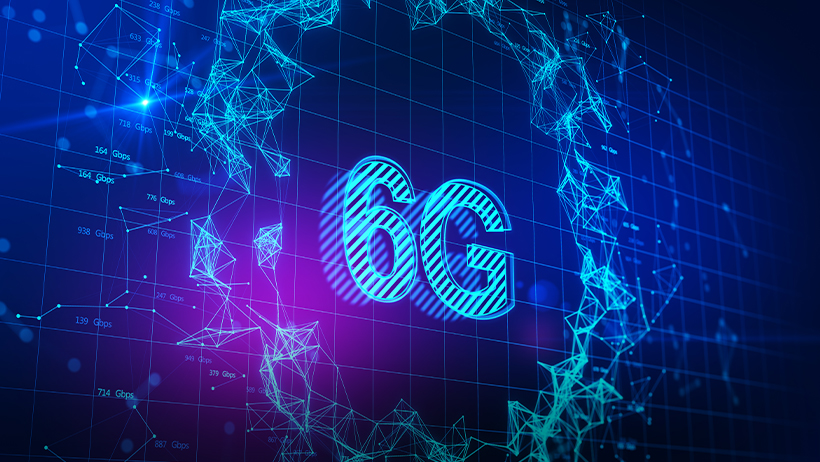Table of Contents
How 6G Will Redefine Connectivity
While 5G continues to expand its global footprint, the world of technology is already gearing up for the next frontier: 6G technology. Promising faster speeds, lower latency, and unprecedented connectivity capabilities, 6G represents a leap forward in communication technology, with the potential to revolutionize industries, economies, and daily life. But how does it compare to 5G, and what advantages will it bring?
Objective of the Article
In this article, we’ll uncover:
- Contrast 5G and 6G networks to explore their differences.
- Examine the current state of 6G development.
- Highlight the potential societal and technological benefits of adopting 6G.
The Evolution from 5G to 6G
1. What is 6G?
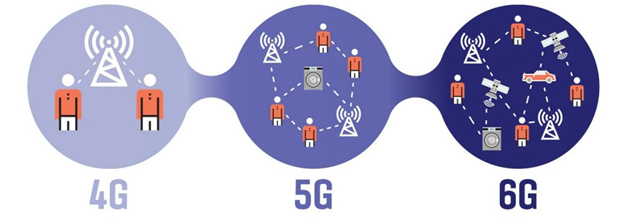
6G is the sixth generation of wireless communication technology. While 5G offers speeds up to 20 Gbps and latency under 1 millisecond, 6G aims to deliver speeds of up to 1 Tbps (terabit per second) and latency as low as 100 microseconds.
2. Key Differences Between 5G and 6G
| Feature | 5G | 6G |
| Speed | Up to 20 Gbps | Up to 1 Tbps |
| Latency | ~1 millisecond | ~100 microseconds |
| Connectivity | Billions of devices | Trillions of devices |
| Focus | IoT and smart cities | XR, AI, and digital twins |
While 5G is about connecting devices, 6G focuses on connecting experiences by enabling immersive technologies like extended reality (XR), autonomous systems, and holographic communication.
Current State of 6G Development
Although commercial deployment is still a decade away, significant strides are being made in 6G research and development:
- China and South Korea lead the race, with the Chinese Academy of Information and Communications Technology launching a 6G satellite in 2022 to test experimental communication methods.
- The European Union has invested €900 million in its Hexa-X initiative to explore 6G applications (European Commission, 2023).
- The United States allocated $1.5 billion for 6G R&D under the CHIPS Act (TechCrunch, 2024).
How 6G Could Impact Our Future
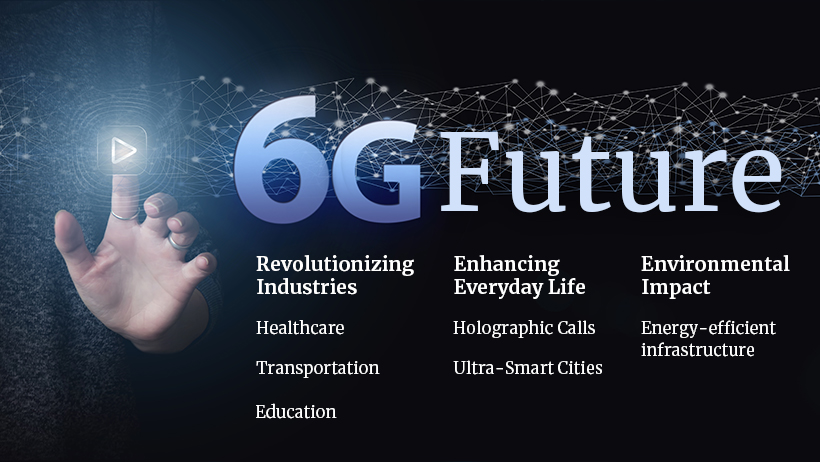
1. Revolutionizing Industries
- Healthcare: Real-time remote surgeries with holographic visuals.
- Transportation: Safer, smarter autonomous vehicles with ultra-reliable connectivity.
- Education: Immersive learning environments powered by XR.
2. Enhancing Everyday Life
- Holographic Calls: High-definition holographic communication will make video calls feel face-to-face.
- Ultra-Smart Cities: 6G will enable trillions of connected sensors to optimize urban living.
3. Environmental Impact
- Advances in energy-efficient infrastructure could reduce the carbon footprint of connectivity systems.
Statistical Insights: 6G’s Promise
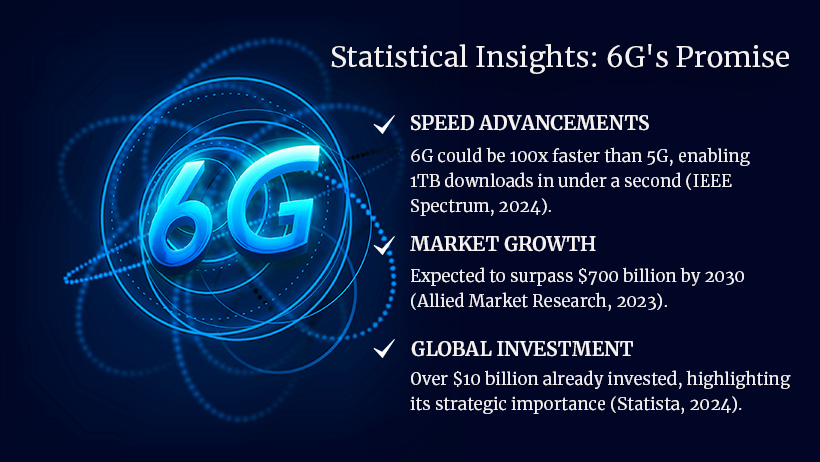
- Speed advancements: 6G could be 100 times faster than 5G, allowing users to download a 1TB movie in less than a second (IEEE Spectrum, 2024).
- Market growth: The 6G market is projected to exceed $700 billion by 2030 (Allied Market Research, 2023).
- Global investment: Over $10 billion has already been poured into 6G research globally, signaling its strategic importance (Statista, 2024).
Key Benefits of 6G
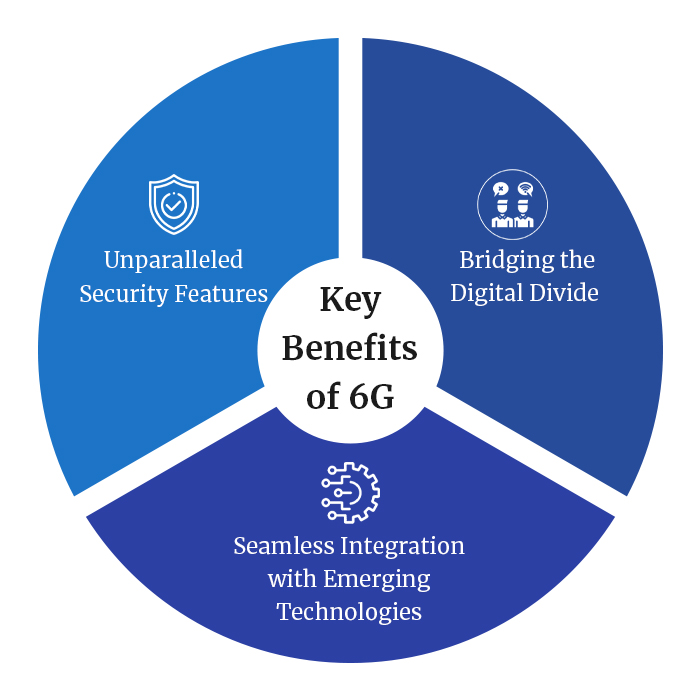
1. Seamless Integration with Emerging Technologies
6G will enable technologies like AI, blockchain, and quantum computing to operate at their full potential.
2. Bridging the Digital Divide
6G’s higher capacity and efficiency will extend coverage to underserved regions, fostering digital inclusivity.
3. Unparalleled Security Features
6G networks will incorporate quantum encryption to secure data against cyber threats.
Preparing for a 6G-Driven World
1. Infrastructure Readiness
Governments and private sectors must collaborate to create robust 6G-ready infrastructures.
2. Research Investments
Investing in academia and R&D will ensure 6G achieves its full potential.
3. Policy and Regulation
Global standardization and ethical guidelines will be critical to prevent misuse of 6G technologies.
A Future Defined by 6G
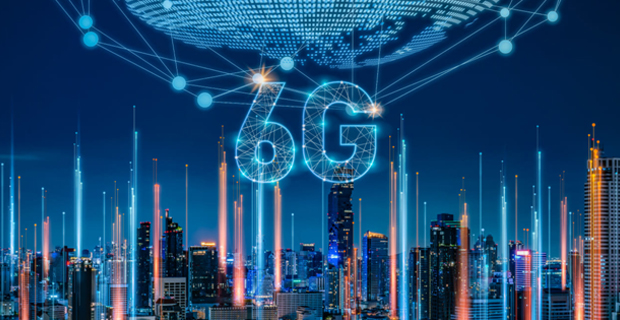
As we transition from 5G to 6G, the possibilities seem endless. By 2035, 6G could redefine how we live, work, and interact, enabling experiences that blur the boundaries between the physical and digital worlds.
However, realizing this potential requires continued investment, collaboration, and innovation.
Countries and corporations leading the charge in 6G development will shape the next technological era, ensuring that connectivity becomes faster, smarter, and more inclusive than ever before.
For consumers, the shift to 6G means unparalleled speed, immersive experiences, and greater access to the tools that shape our digital futures. For businesses, the opportunities lie in leveraging this infrastructure to deliver more dynamic, responsive, and innovative services.
The race for 6G it’s about preparing society for the future of boundless connectivity.
